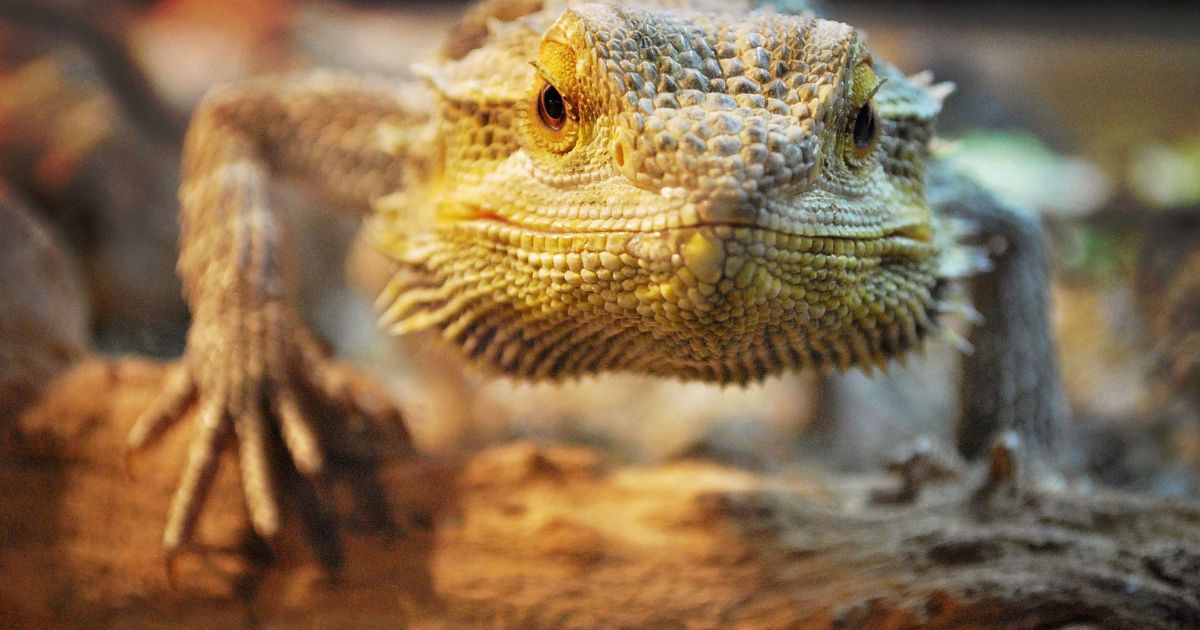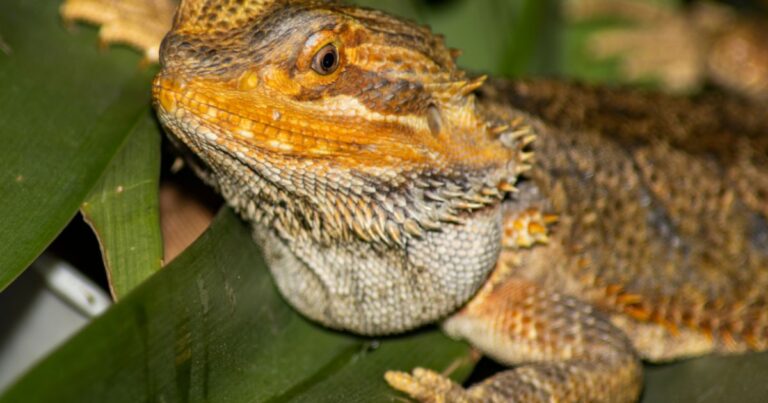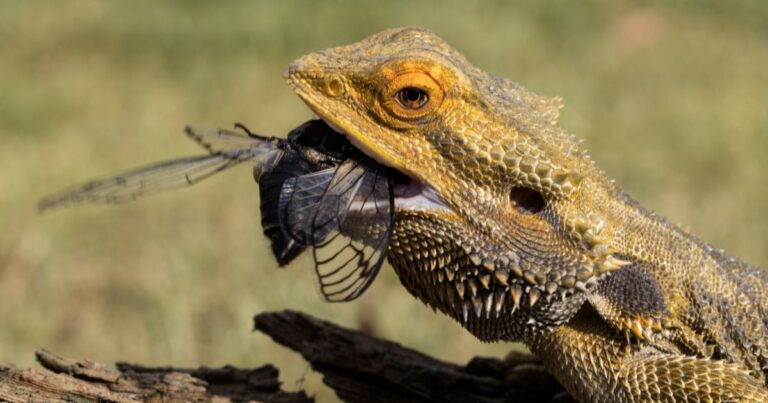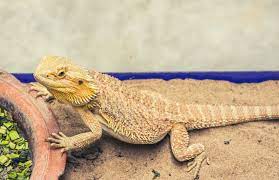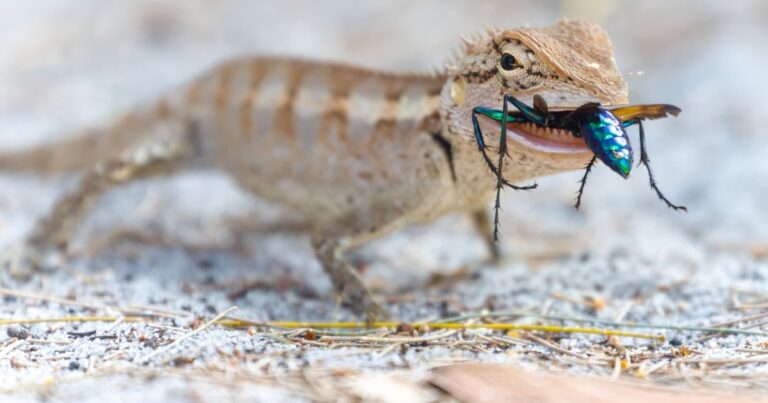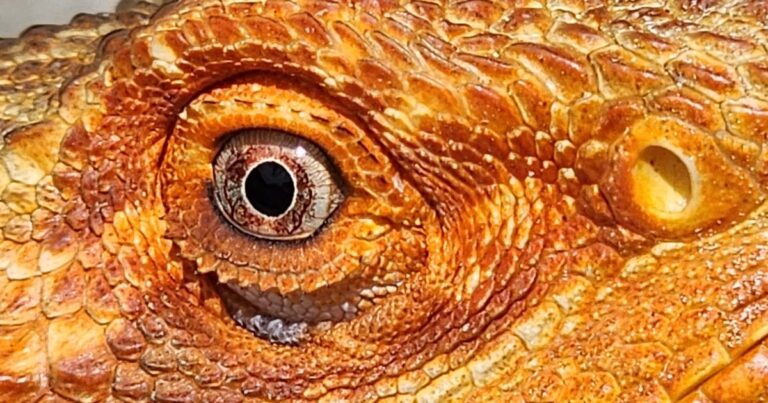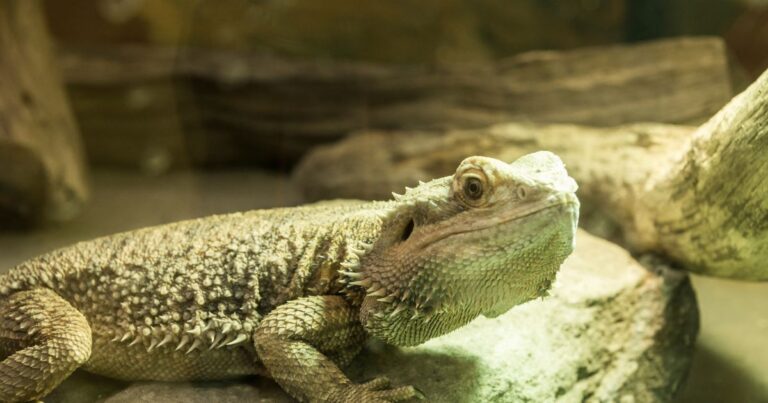Bearded Dragon Poisoning: What is Toxic to Bearded Dragons
Table of Contents
Key Summary Table: Bearded Dragon Poisoning
| Aspect of Care | Details |
|---|---|
| Common Household Toxins | Certain plants, foods, and cleaning products |
| Symptoms of Poisoning | Loss of appetite, lethargy, irregular stool, changes in skin color, neurological distress |
| Response to Toxic Ingestion | Remove from toxin source, contact a reptile veterinarian |
| Safe Plants for Enclosure | Hibiscus, dandelion, clover |
| Common Habitat Toxins | Certain substrate materials, types of wood or rocks |
| Natural Remedies | Hydration, warm and comfortable environment |
| Safe Substrate | Newspaper, tile, non-adhesive shelf liner, paper towels, flat stones. |
| Safe Feeder Insects | Source from reputable suppliers, avoid wild insects |
Hey there, fellow dragon lovers! Today, we’re tackling the scary topic of bearded dragon poisoning. It’s a real threat to our scaly buddies, but don’t worry! We’ll explore the signs, the common culprits, and how to keep your dragon safe. Ready for this adventure? Let’s go!
Introduction
Hey there, dragon lovers! Today, we’re going to explore a serious topic that every bearded dragon owner should be aware of – poisoning and toxicities. As a bearded dragon enthusiast and owner myself, I’ve learned a lot about the potential dangers that can harm our scaly friends. From toxic plants to harmful household items, there are numerous things that we need to be cautious about. But don’t worry, with the right knowledge and care, we can ensure our bearded dragons live a safe and happy life.
The health of our bearded dragons is in our hands. Let’s make sure we’re doing everything we can to keep them safe from toxins.
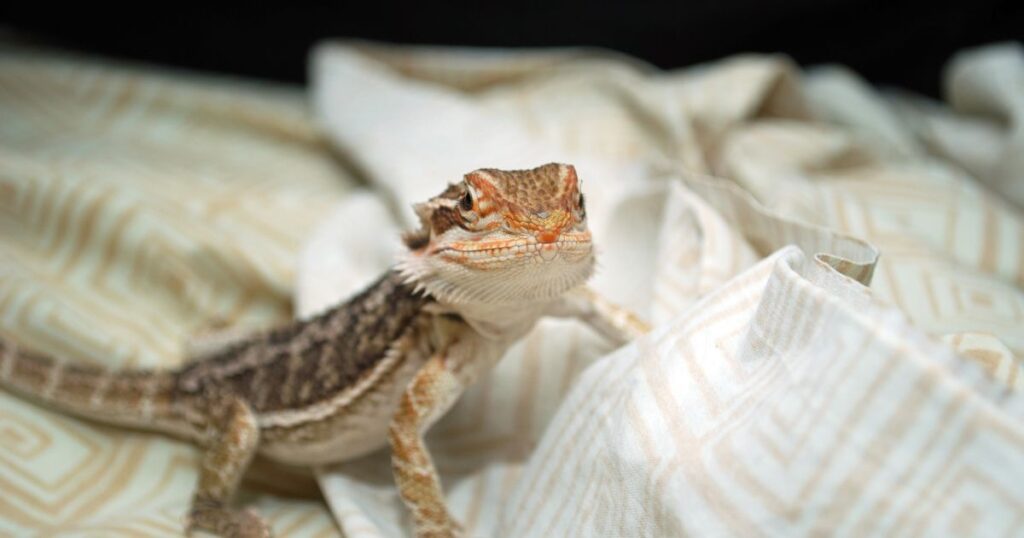
What is Toxic to Bearded Dragons?
| Household Toxins | Effects on Bearded Dragons |
|---|---|
| Avocado | Can cause cardiac distress |
| Rhubarb | Can cause kidney failure |
| Dairy products | Can cause digestive issues |
| Cleaning products | Can cause respiratory distress |
You might be surprised to learn that some common household items can be toxic to our scaly friends. Certain types of plants, foods, and even cleaning products can pose a threat to their health. For instance, avocado, rhubarb, and dairy products are harmful if ingested by bearded dragons. Similarly, cleaning products containing phenols, pine oils, or citrus oils can be dangerous. It’s crucial to be aware of these potential hazards and keep them out of reach of our bearded dragons.
Symptoms of Bearded Dragon Poisoning
| Symptom | Description |
|---|---|
| Loss of appetite | Refusal to eat or decreased food intake |
| Lethargy | Decreased activity, sluggishness |
| Irregular stool | Changes in color, consistency, or frequency |
| Changes in skin color | Unusual coloration, spots, or patterns |
| Neurological distress | Tremors, seizures, uncoordinated movements |
Recognizing the signs of poisoning in bearded dragons is crucial for their survival. Symptoms can vary depending on the type of toxin they’ve been exposed to. However, some common signs include loss of appetite, lethargy, irregular stool, and changes in skin color. In severe cases, they might exhibit signs of neurological distress like tremors, seizures, or uncoordinated movements. If you notice any of these symptoms, it’s important to seek veterinary care immediately.
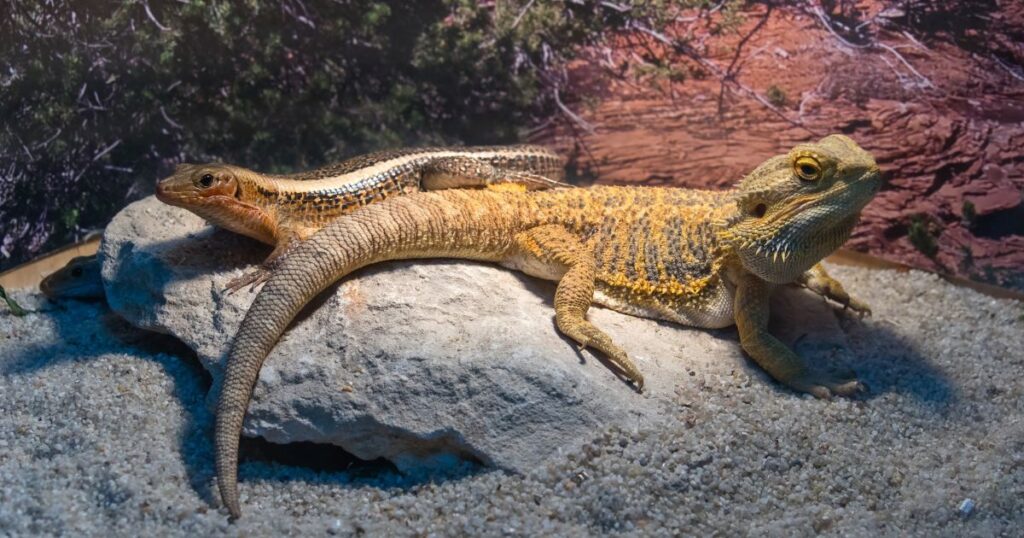
How to Tell if Your Bearded Dragon Has Ingested a Toxic Plant
Plants can add a touch of nature to our dragon’s enclosure, but some can be harmful. If your bearded dragon has eaten a toxic plant, they might show signs like loss of appetite, vomiting, or diarrhea. They might also become lethargic or show changes in their behavior. It’s important to monitor your bearded dragon closely, especially if you’ve introduced new plants into their environment.
Signs Your Bearded Dragon Has Ingested a Toxic Plant
- Loss of appetite
- Vomiting
- Diarrhea
- Changes in behavior
Dangerous Household Products for Bearded Dragons
| Dangerous Household Products | Effects on Bearded Dragons |
|---|---|
| Cleaning Products (containing phenols, pine oils, or citrus oils) | Can cause respiratory distress and skin irritation |
| Certain Types of Paint | Can emit fumes that are harmful if inhaled |
| Certain Types of Plastic (especially when heated) | Can release toxins that are harmful if ingested or inhaled |
| Certain Types of Wood (treated or painted) | Can cause skin irritation or toxicity if ingested |
| Certain Types of Metals (like lead or zinc) | Can cause toxicity if ingested |
| Certain Types of Plants (like ivy or ferns) | Can cause toxicity if ingested |
| Certain Foods (like avocado or rhubarb) | Can cause serious health issues if ingested |
Our homes are filled with items that can pose a threat to bearded dragons. Cleaning products, certain types of paint, and even some types of plastic can be harmful if ingested or if they come into contact with your bearded dragon’s skin. It’s important to keep these items out of reach and to ensure that your bearded dragon’s enclosure is free from these potential hazards.
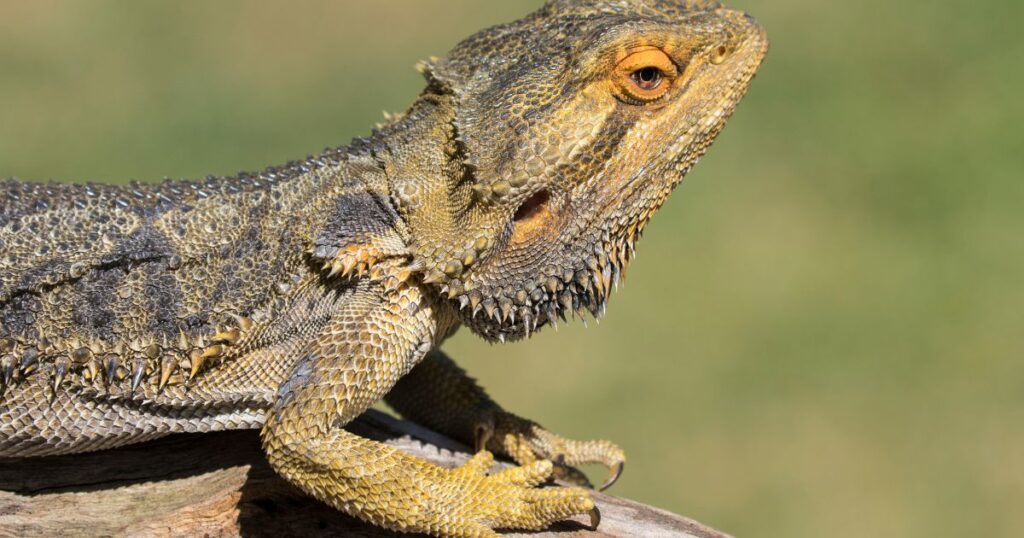
What to Do if Your Bearded Dragon Has Been Exposed to a Toxic Substance
Accidents can happen, and it’s important to know what to do if your bearded dragon ingests a toxic substance. The first step is to remove your bearded dragon from the source of the toxin. Next, you should contact a reptile veterinarian immediately. They can provide guidance on the next steps and may need to administer treatment to help your bearded dragon recover.
Steps to Take if Your Bearded Dragon Has Been Exposed to a Toxic Substance
- Remove your bearded dragon from the source of the toxin
- Contact a reptile veterinarian immediately
- Follow the veterinarian’s instructions for care and treatment
Choosing Safe Plants for Your Bearded Dragon’s Enclosure
| Plant | Notes |
|---|---|
| Hibiscus | Safe for ingestion, provides enrichment, High in fiber and vitamin C |
| Dandelion | Safe for ingestion, provides enrichment, High in calcium and vitamins |
| Clover | Safe for ingestion, provides enrichment, High in protein and vitamins |
Creating a safe and comfortable habitat for our dragons is a top priority. When choosing plants for their enclosure, it’s important to select ones that are non-toxic. Some safe options include hibiscus, dandelion, and clover. Always ensure that any plants you introduce are free from pesticides and have been thoroughly washed.
To prevent bearded dragon poisoning, I’ve become quite creative with Gilbert’s enclosure. I’ve researched and found a list of safe plants that not only add a touch of nature to his space but also provide him with a bit of enrichment. I also make sure to thoroughly wash all plants before placing them in his enclosure. It’s a fun process that allows me to express my creativity while ensuring Gilbert’s safety.
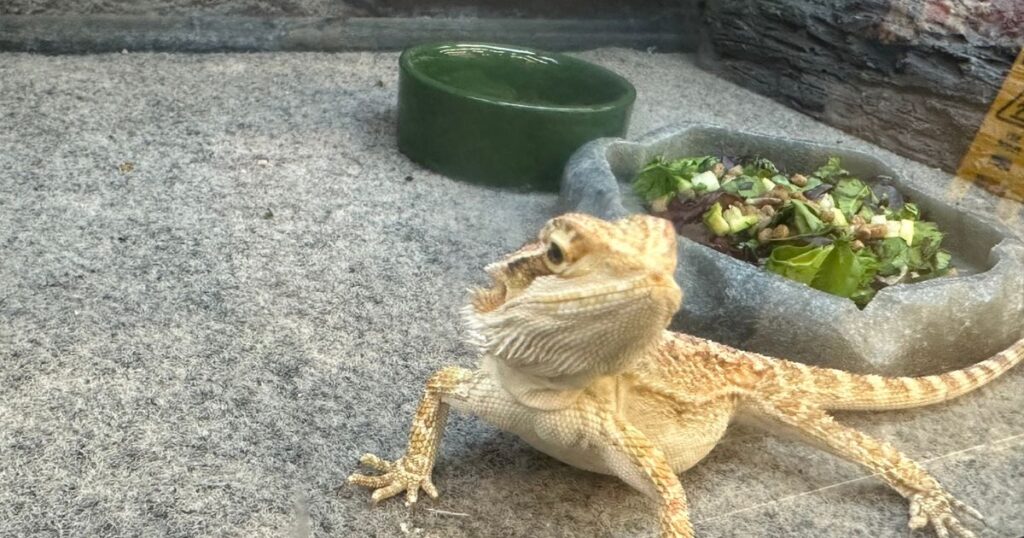
Common Toxic Substances in Bearded Dragon Habitats
| Toxic Substances | Effects on Bearded Dragons |
|---|---|
| Sand | Can cause impaction if ingested |
| Walnut shells | Can cause impaction if ingested |
| Certain types of wood | Can cause skin irritation |
| Certain types of rocks | Can cause digestive issues |
Even in their habitats, bearded dragons can encounter toxic substances. Substrate materials like sand or walnut shells can cause impaction if ingested. Certain types of wood or rocks can also be harmful if they contain toxic substances. It’s important to carefully select and prepare all materials used in your bearded dragon’s habitat.
Common Toxic Substances in Bearded Dragon Habitats
- Certain types of substrate (like sand or walnut shells)
- Certain types of wood
- Certain types of rocks
Natural Remedies for Bearded Dragon Poisoning
While professional veterinary care is crucial in cases of poisoning, there are some natural remedies that can support your bearded dragon’s recovery. Hydration is key, so ensure your bearded dragon has access to fresh water. Providing a warm and comfortable environment can also help them recover.
Natural Remedies for Bearded Dragon Poisoning
- Ensure your bearded dragon is well-hydrated
- Provide a warm and comfortable environment
- Follow all veterinary advice and treatment plans
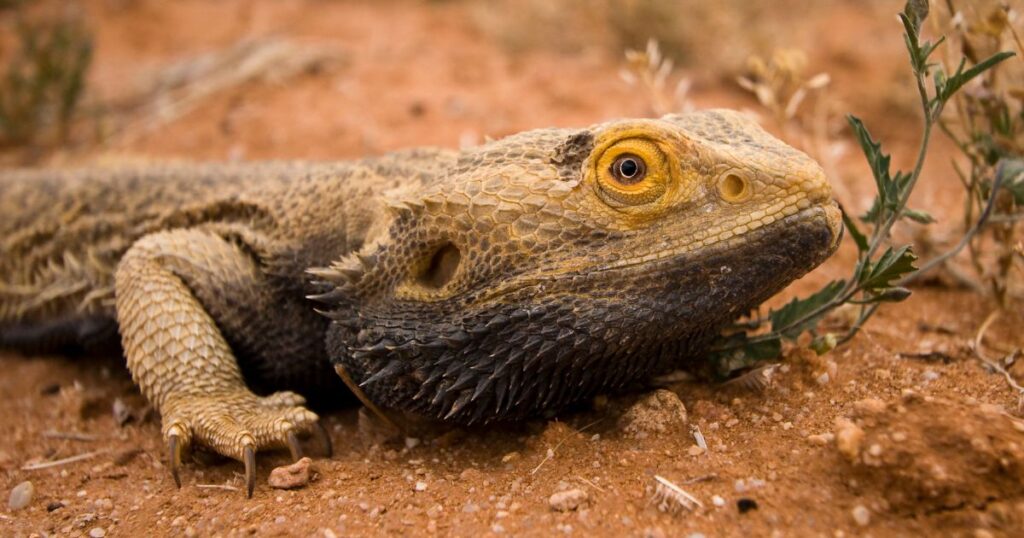
The Role of Substrate in Bearded Dragon Toxicity
| Safe Substrates for Bearded Dragons | Benefits |
|---|---|
| Newspaper | Easy to replace, inexpensive, and safe if ingested |
| Tile | Easy to clean, durable, and safe if ingested |
| Non-adhesive Shelf Liner | Easy to clean, provides good grip, and safe if ingested |
| Paper Towels | Easy to replace, inexpensive, and safe if ingested |
| Flat Stones | Natural look, easy to clean, and safe if ingested |
The ground beneath our dragon’s feet can sometimes be a source of toxicity. Let’s delve into the role of substrate in bearded dragon poisoning. While many people might recommend reptile carpet, I’ve found it can actually pose a risk. Gilbert once got his claws stuck in the carpet fibers, which could have led to a painful situation if his nails had been ripped out. So, I advise against using reptile carpet. Instead, I recommend safer alternatives like newspaper or non-adhesive shelf liner. These options are easy to clean, safe for your dragon, and won’t pose a risk to their delicate claws.
Ensuring the Safety of Feeder Insects for Your Bearded Dragon
| Safe Insects | Benefits for Bearded Dragons |
|---|---|
| Crickets | High in protein |
| Mealworms | Good for occasional treats |
| Dubia roaches | High in protein and easy to digest |
| Waxworms | High in fat, good for occasional treats |
Feeding time should be safe and nutritious for our dragons. The insects you provide should be healthy and free from any potential toxins. Always source your feeder insects from reputable suppliers and avoid catching insects from the wild, as they may have been exposed to pesticides.
Creating a safe habitat for our bearded dragons is a labor of love. Every detail matters, from the plants we choose to the substrate we use.
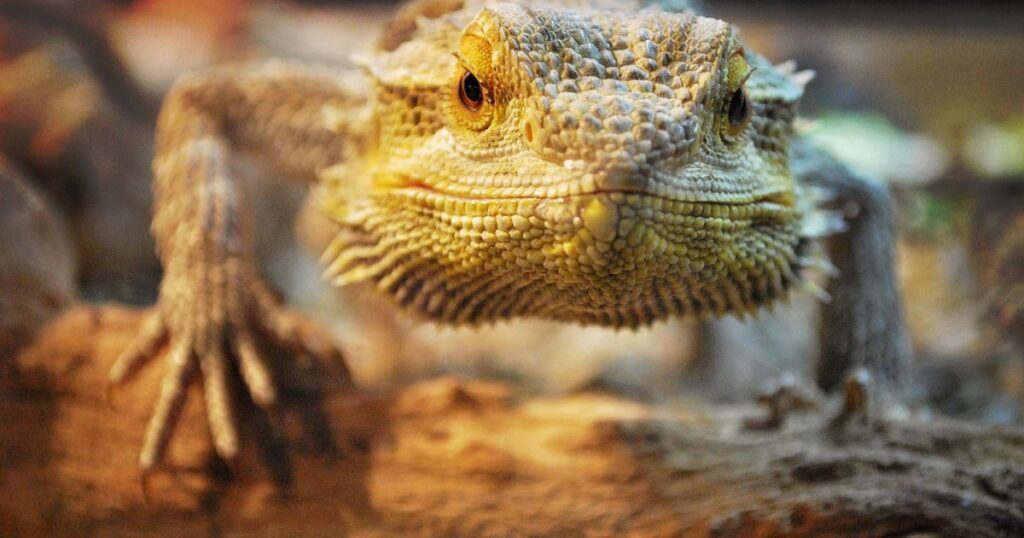
Conclusion
Keeping our bearded dragons safe from poisoning and toxicities is a big responsibility, but with the right knowledge, we can create a safe and happy environment for them. Remember, prevention is always better than cure. By being aware of potential hazards and taking steps to prevent exposure, we can ensure our bearded dragons live a long and healthy life.
If you want to learn more about bearded dragon care, check out the Bearded Dragon Care category. And don’t forget to check out my index page on Bearded Dragon Health Issues.
Other posts of interest: Bearded dragon obesity and weight management and Bearded dragon reproductive disease and concerns
Disclaimer: This article is intended for informational purposes only. It’s not a substitute for professional veterinary advice. If your bearded dragon shows signs of illness or poisoning, seek veterinary care immediately.
Frequently Asked Questions
What is toxic to bearded dragons?
Several things can be toxic to bearded dragons, including certain types of plants, foods, and cleaning products. For instance, avocado, rhubarb, and dairy products are harmful if ingested by bearded dragons. Cleaning products containing phenols, pine oils, or citrus oils can also be dangerous.
What are the symptoms of bearded dragon poisoning?
Symptoms of bearded dragon poisoning can vary depending on the type of toxin they’ve been exposed to. However, common signs include loss of appetite, lethargy, irregular stool, and changes in skin color. In severe cases, they might exhibit signs of neurological distress like tremors, seizures, or uncoordinated movements.
How can I tell if my bearded dragon has ingested a toxic plant?
If your bearded dragon has eaten a toxic plant, they might show signs like loss of appetite, vomiting, or diarrhea. They might also become lethargic or show changes in their behavior. It’s important to monitor your bearded dragon closely, especially if you’ve introduced new plants into their environment.
Are there specific household products that are dangerous to bearded dragons?
Yes, certain household products can be harmful to bearded dragons. This includes some cleaning products, certain types of paint, and even some types of plastic. Always keep these items out of reach and ensure your bearded dragon’s enclosure is free from these potential hazards.
Can bearded dragons get poisoned from eating contaminated insects?
Yes, bearded dragons can get poisoned if they eat insects that have been exposed to pesticides or other harmful substances. Always source your feeder insects from reputable suppliers and avoid catching insects from the wild.
What should I do if I suspect my bearded dragon has been exposed to a toxic substance?
If you suspect your bearded dragon has been exposed to a toxic substance, the first step is to remove them from the source of the toxin. Next, contact a reptile veterinarian immediately. They can provide guidance on the next steps and may need to administer treatment to help your bearded dragon recover.
How do I choose safe and non-toxic plants for my bearded dragon’s enclosure?
When choosing plants for your bearded dragon’s enclosure, select ones that are non-toxic. Some safe options include hibiscus, dandelion, and clover. Always ensure that any plants you introduce are free from pesticides and have been thoroughly washed.
What are the common toxic substances found in bearded dragon habitats?
Common toxic substances in bearded dragon habitats can include certain types of substrate materials like sand or walnut shells, which can cause impaction if ingested. Certain types of wood or rocks can also be harmful if they contain toxic substances.
Are there any natural remedies for bearded dragon poisoning?
While professional veterinary care is crucial in cases of poisoning, there are some natural remedies that can support your bearded dragon’s recovery. Hydration is key, so ensure your bearded dragon has access to fresh water. Providing a warm and comfortable environment can also help them recover.
How can I ensure that the feeder insects I provide are safe for my bearded dragon?
To ensure the insects you provide are safe, always source your feeder insects from reputable suppliers. Avoid catching insects from the wild, as they may have been exposed to pesticides.
